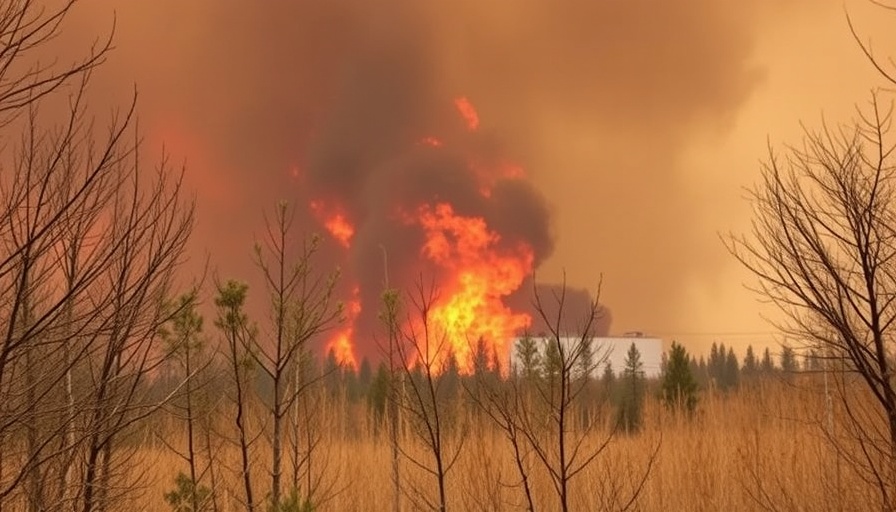
New Jersey Wildfire: A Sign of Escalating Climate Risks?
The recent wildfire in New Jersey has caused thousands to evacuate their homes, raising alarms about the increasing frequency and intensity of such fires due to climate change. With more than 12,000 acres burned and threats to critical infrastructure, including the decommissioned Oyster Creek nuclear power plant, this situation underscores the urgent need for communities to prioritize emergency preparedness and sustainable living practices.
Evacuations and Infrastructure Impact
On Tuesday, as the flames from the Jones Road wildfire surged, over 5,000 residents in Lacey and Ocean townships were forced to evacuate. Highways were closed, and shelters were established for those affected. The situation became dire enough that the Jersey Central Power and Light Company cut electricity for approximately 25,000 customers to support firefighting efforts. This illustrates how wildfires can disrupt everyday life and critical services, highlighting the interconnectedness of community resilience and infrastructure planning.
Lessons Learned: The Importance of Preparedness
The challenges faced by thousands during this wildfire serve as a stark reminder of the importance of being prepared. Families like Debi Schaffer’s who had to choose between evacuating or staying behind presented difficult decisions. The emotional toll and chaos experienced by evacuees reflect what can happen when communities are not prepared to handle such disasters effectively.
Future Predictions: Rising Threats from Wildfires
The New Jersey wildfire is projected to be one of the largest in the state in two decades if current trends continue. As climate change accelerates, we can expect more instances of extreme weather leading to increased wildfire risks. The potential for such events emphasizes the necessity for comprehensive risk assessment and sustainable land management practices in the area to mitigate future disasters.
Community Connection: Gathering for Safety
The gatherings at local high schools illustrate the profound community solidarity in the face of adversity. These temporary shelters not only provide safety but also foster connections among residents who band together during crises. The human experience during pandemonium can strengthen community ties, showing that together, we can navigate through uncertainty.
Taking Action: What You Can Do
As citizens, it is essential to be proactive in response to natural disasters. Individuals should follow local authorities on emergency preparedness tips, stay informed about weather conditions, and consider adjustments to their homes to promote sustainability. Embracing eco-friendly practices not only helps combat climate change but also strengthens community resilience.
In conclusion, the New Jersey wildfire serves as a wake-up call for everyone. It’s a reminder of the growing threats posed by climate change and the urgent need for individuals and communities to engage in sustainable practices. By prioritizing preparedness, resilience, and sustainability, we can minimize the impacts of such disasters in the future. Stay tuned to local news and be prepared to act in case of emergency. Together, we can protect our homes and communities.
 Add Row
Add Row  Add
Add 





 Add Row
Add Row  Add
Add 








Write A Comment